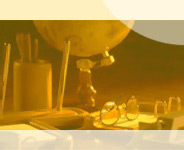 |
 |
 |
| Home | More Articles | Join as a Member! | Post Your Job - Free! | All Translation Agencies |
|
|||||||
|
|
History Of The World Intellectual Property System According To Me
(This article was originally published in Translorial, a quarterly journal published by the Northern California Translators Association (http://www.ncta.org), a chapter of the American Translators Association (http://atanet.org/). "The patent system added the fuel of interest to the fire of genius" Abraham
Lincoln The patent system, like all good things, was invented in what is today Italy. A system for granting patents for inventions was first introduced in the 15th century - the first known grant of a patent to an inventor occurred in the Republic of Florence in 1421 and an ordinance about patents was enacted in Venice in 1474, 18 years before Columbus discovered America. According to Encyclopedia Britannica, the word patent is derived from "letters patent", which earlier designated the document by which a sovereign conferred a privilege or right on someone. The name was a reference to the fact that the document, addressed to public at large, was sealed with the great seal in such a way that the document could be unfolded and read without breaking the seal ("patent," from the Latin meaning "opened" or "exposed"). While many European languages use the same word patent and this word has in those languages the same meaning as in English, the etymology of the Japanese word for patent "tokkyo" refers to two words - "toku" (special), and "kyo" (permission). The permission that a patent refers to is the exclusive right to make (manufacture) and to deal with the subject matter of the patent for a limited period of time. This period depends on the country. In the England of Queen Elisabeth I, exclusive rights for new inventions were granted for 14 years. Comprehensive patent statutes appeared near the end of the 18th century and specific patent statutes were enacted in most European states in early or mid 19th century. Revolutionary France adopted in 1791 a statute declaring the natural right of an inventor to the exclusive right to his invention. A special characteristic of the French system was the principle that no examination of any kind was required. The United States originally adopted the French system for patents in 1793, but a new patent which was adopted in this country in 1836 includes what is referred to as examination. A similar system based on examination of patents was adopted by Germany in 1877 and many other countries. An examiner searches through relevant prior patents (existing technology is referred to as "prior art" in English and "jurai gijutsu" in Japanese), possibly including those of other countries and other available publications, to determine whether or not the invention being claimed is in fact new. To qualify for a patent, an invention must be new and satisfy the criterion of novelty, which means that it must be a new concept. If the invention has been described previously in a printed publication (for instance in the proceedings from a lecture series of an academic society, distributed to a handful of people), it is no longer considered new and a patent can not be granted. It also has to satisfy the requirement of "inventive step" or "unobviousness" (referred to as "shimposei" in Japanese), which means that the new subject matter must sufficiently advance the existing technology or techniques. If the invention merely enables a solution that would be obvious to persons having special knowledge in the relevant field ("persons in the art", referred to as "togyosha" in Japanese), a patent should not be granted. Needless to say, this criterion is often very subjective and depends on the interpretation of an examiner. The history of patents is so fascinating because it is really the history of the capacity of the human mind to conceive of new methods to solve old problems. Some of the major historical patents and patent-related inventions and events are listed below:
In addition to patents, industrial property laws also protect utility models, designs, and trademarks. The Japanese Patent Office ingeniously explains on its Web page (translated into English, along with other documents of the Japanese Patent Office by yours truly), (http://www.jpo.go.jp/seido_e/index.htm) the difference between a patent, a utility model, a design, and a trademark as follows: (Patent) An invention of the telephone set design, that is to say the first application of the electromagnetic method used for communication. A utility model can relate to the shape, construction, etc., or utilization of an integrated unit equipped with a separate telephone receiver and telephone transmitter. (Utility models are used only in some countries, such as Japan and Germany). (Design) A smart design of a desktop telephone relating to its shape, pattern, and other design characteristics. (Trademark) A mark provided on the product, packaging, etc., in order to indicate the reliability of maintenance and other characteristics of the products produced by the company that manufactured the telephone set. If the last four or five hundred years covering development of the patent system in various countries were filled with spectacular inventions, which were adding fuel to the seemingly inexhaustible engine driving these invention called the human brain, the last four or five decades, starting with the invention and development of the transistor in the fifties and continuing with the design of the microprocessor in the seventies, were unprecedented in how this new technology changed and continues to change our world. Computers, faxes, printers and modems and wireless networks replaced and sometime obliterated entire established professions. At the same time, these new technologies created new professions, such as software developers and technical translators, which did not even exist twenty years ago. Armed with a handful of fairly affordable gadgets and connected to an online service, a freelance translator is now free to look for customers and find context, documents and reference sources in dozens of languages anywhere in this world. It is easy to see that in this "borderless, interconnected, interdependent", etc., world, the need for professional translators of technical and legal documents, who can be hired on a moment's notice for a single job that can be completed in a few minutes or for a series of projects stretching over a period of many years, will only grow. It is also likely that the field of technical inventions with international designs and trademarks will create a lot of interesting work for freelance translators. A look at some of the more famous or infamous design and trademark issues that resulted in protracted litigation battles, sometime with an international twist to them, may shed some light on the kinds of issues that could be hotly disputed in the near future. For example, there was the lawsuit against George Harrison, which accused him of having "stolen" the tune of "My Sweet Lord" from the author of the song "He's So Fine" for the Shiffons back in the sixties. The famous Beatle actually lost this lawsuit and had to pay the composer whose name nobody remembers any more two hundred and fifty thousand dollars. I don't think that he consciously stole the melody, but the melody is quite similar. Or for a more recent development, there was a lawsuit in which Kendall-Jackson, a winery in the town of Santa Rosa here in Northern California's wine country, accused Gallo of having stolen their design of a vine leaf for a Gallo brand of wines called Turning Leaf. Kendall-Jackson lost because the judge decided that nobody can claim to own the image of a leaf, not even in California. On the other hand, there is no law against owning the moon and selling pieces of it to other people. There is a guy somewhere in United States, I forgot in which state, who claimed sovereignty over the moon (apparently, this would be illegal for a corporation, but not for a private person) and he now has a company which is selling real estate on the moon. It's perfectly legal, and people are buying in droves. Then, when they have a barbecue party in their backyard, they can proudly point to a spot on the moon and say: "See that spot on the moon over there? It's mine, I bought it. And it was only forty nine thousand dollars." Now, that's a truly American design. I doubt that a Japanese or German businessman would ever think of something like that. If the American entrepreneur was ever sued at some point, which would seem likely, I have not heard about it, possibly because no translations were needed. According to Bloomberg News, Bitburger Brauerei, a German beer brewer based in the town of Bitburg, wants the European Union's trademark office to annul Anheuser-Busch and American Bud trademarks because Anheuser-Busch is "difficult to pronounce, especially after drinking beer", and consumers tend to shorten it to "Bud", which in noisy bars can lead to confusion over Bitburger's trademark "Bit" according to documents filed at the European Court in Luxembourg. To which I would say: "Lass dir Raten, trinke Spaten" (take my advice and drink Spaten). Problem solved. The legal dispute between Anheuser-Busch and a tiny beer brewery in southern Bohemia in Czech Republic is also very interesting. The advertising budget of Anheuser-Busch alone is bigger than the total revenues of the tiny Czech Budweiser Company. Back in 1911, the brewers of the Czech Budweiser brand, the original Budweiser beer, according to Czechs dating back to 13th century, agreed to let the Americans use the name Budweiser beer in America but kept the rights to this name in Europe. The Czechs consider the seven centuries of Budweiser brewing tradition an important part of their national heritage and don't want the American Budweiser beer to put their good name to shame in Europe. That's the way they see it. Somebody must save European civilization from American mass production, and the lofty tasks fell upon the strong shoulders of burly Czech beer brewers. The trademark dispute battle rages on. The Czechs will not sell out to the Americans. No way. I wonder what Abraham Lincoln would say if he knew about this mighty intellectual property issue battle. My guess is that he would ask to take a sip from both bottles, and then, he just might have to side with the Czech beer brewers. He was an honest man. And for a president, he had good taste.
E-mail this article to your colleague! Need more translation jobs? Click here! Translation agencies are welcome to register here - Free! Freelance translators are welcome to register here - Free! |
|
|
Legal Disclaimer Site Map |